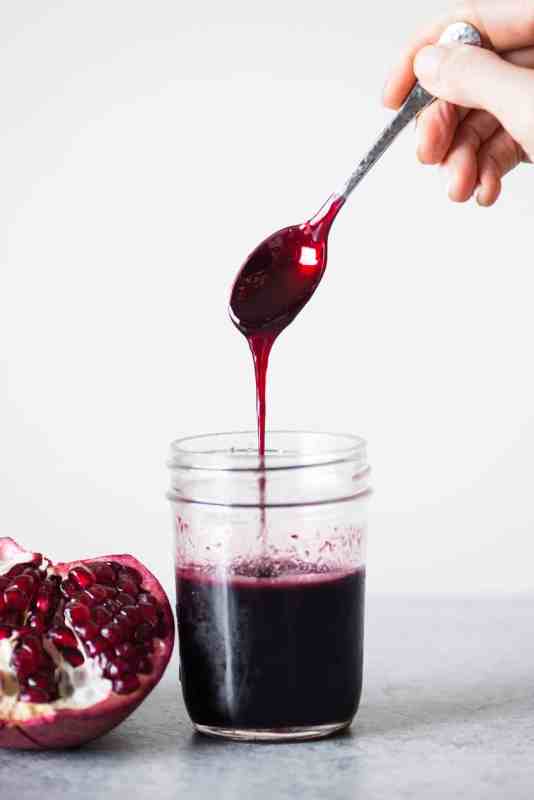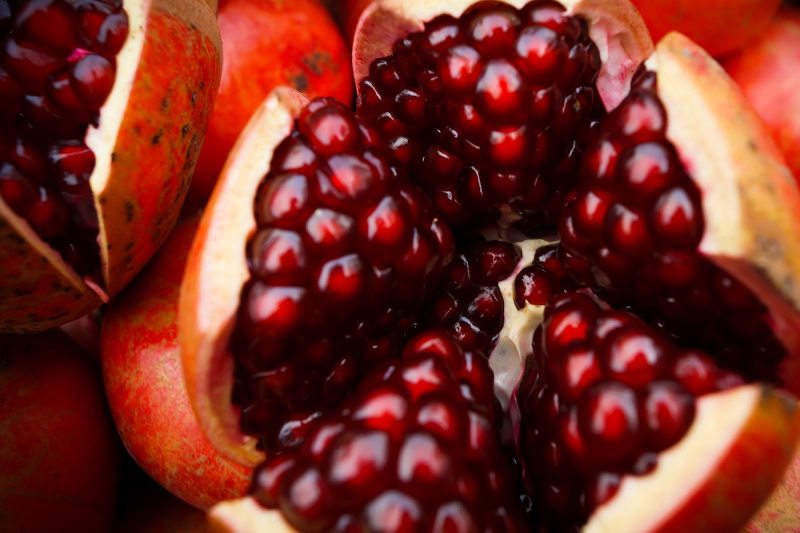The pomegranate is a gorgeous fruit with a sometimes sinfully complicated reputation. While modern culture may know it as simply a source of trendy juice that’s apparently good for heart health, history tells a much seedier tale of this bejeweled little berry. According to ancient Iranian Christianity, the pomegranate was actually the real forbidden fruit Eve offered to Adam, not the apple as is so often depicted in stories and art. The pomegranate certainly looks more deliciously tempting and naughty compared to the ever-pure and wholesome apple.
So let’s settle the debate, shall we? Is this historically complicated fruit good? Or is it evil?
Are pomegranates good for you?
Pomegranates have been used medicinally for thousands of years and for a variety of reasons. They’re even documented as far back as 1500 BCE as being used to treat tapeworms. Folk medicine from all around the globe holds that pomegranates can treat everything from dysentery to osteoarthritis, but what does modern science say? Some studies have suggested that the antioxidants found in pomegranates may help slow or prevent atherosclerosis (hardening of the arteries), making it just as wonderful for heart health as all the juice companies claim. Additional studies suggest that pomegranates could also aid in lowering inflammation, protecting against infection, and even helping to reduce dental plaque.
Of course, as with any food, allergies can cause potential side effects; if you’re trying pomegranates for the first time, do so with caution. Furthermore, similarly to grapefruit juice, pomegranates should not be mixed with certain cholesterol-lowering medications. If you have any concerns, check with your doctor.
How to select and store
When are pomegranates in season? In the northern hemisphere, they can be found between October and January, making these dazzlingly ruby little seeds the perfect accent for holiday dishes. In order to select the best ones from the grocery display, look for pomegranates that feel heavy for their size. This indicates that the seeds inside, known as the arils, are full and juicy. The color of pomegranates should be a deep, crimson red. Unlike with other fruits that are often dismissed for their blemishes, pomegranates with cracks are usually the best ones, as shell-splitting is further evidence of extremely juicy seeds inside.
If left whole, pomegranates can be kept in a cool, well-ventilated place at room temperature for about a week. Alternatively, they can be kept in the fridge for up to two months. Just be sure not to crowd them or put them in the crisper drawer of the fridge as they need air circulation to stay fresh.
Freshly squeezed juice or harvested seeds can last up to five days in the refrigerator inside an air-tight container.
How to open
Getting the rich ruby treasure out of these hard-shelled beauties can be an annoying process. However, with this easy method, you’ll have the job done with as little mess and frustration as possible.
Start by slicing the pomegranate in half. Working with one half at a time, hold the pomegranate cut-side down over a large, empty bowl. Using your free hand, hit the back of the pomegranate with a large wooden spoon until the seeds fall into the bowl. Keep in mind that while gentleness may be a virtue elsewhere, now is not the time for delicacy. Give that pomegranate a few good, solid whacks until the seeds come loose.
Remove from the bowl any white membrane pieces that may have come out in the violence, and then enjoy your seeds.
How to eat
These little jewels can be eaten in any number of ways. They’re absolutely exquisite even when plain and straight from the bowl. With how they burst between your teeth like teeny flavor bombs, you couldn’t ask for a tastier snack. They’re also a breeze to incorporate into almost any dish. Sprinkle them on top of a creamy pasta dish for a gorgeous pop of color and a tiny bite of sweetness. Toss a few onto your favorite dessert, making even a basic brownie with ice cream feel like something special.
If it’s the juice you’re after, simply blend the seeds in a blender or food processor. When they are as pulverized as they’re going to get, strain the mixture over a fine-mesh sieve into a glass, using a spatula to press the juices from the pulp left in the sieve.
Pomegranate Molasses Recipe

(From Healthy Nibbles)
This recipe for pomegranate molasses is positively sinful in its deliciousness. Use it for stirring into cocktails, drizzling on ice cream, mixing into a salad dressing, or eating straight from the jar. We won’t judge.
Ingredients:
- 4 cups pomegranate juice
- 1/2 cup + 2 tablespoons sugar
- 1/4 cup lemon juice
Method:
-
In a small saucepan, combine pomegranate juice, sugar, and lemon juice. Bring to a boil, then reduce to a simmer.
-
Simmer uncovered for about 45 minutes, stirring occasionally to make sure that the sugars don’t stick to the bottom of the pan.
- After 45 minutes, much of the liquid will have evaporated. Reduce the heat very slightly and let it simmer for another 15 minutes or so.
- To test if the molasses is done, dip a spoon into it. If it coats the spoon, the molasses is done cooking.
- Remove from heat and cool before pouring into a jar. The mixture will still be runny at first, but it will thicken as it cools.
With its astonishing beauty, impressive health benefits, delicious flavor, and cooking versatility, we’re going to go ahead and say the debate is over: This exquisite little fruit is decidedly good. Not today, Satan.







